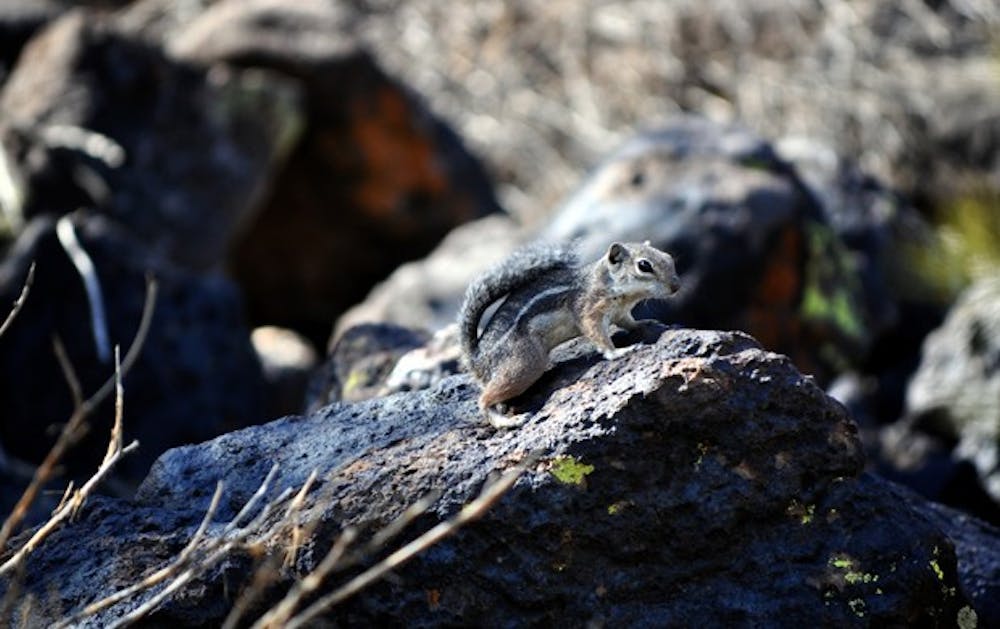
Like the thousands of petroglyphs found in its more than 47 acres of land, the Deer Valley Rock Art Center has long been a hidden gem. Not hidden for hundreds and thousands of years, petroglyph-style, but hidden nonetheless.
The center, which is nestled in a nature preserve surrounded by residential area in Phoenix, has been in operation for 15 years. It’s a hybrid of a traditional museum – an ultramodern building, knowledgeable docents and a spotless, unassuming gift shop – and an archaeological site that lets visitors experience the rock art left by indigenous people including the Hohokam, Patayan and archaic desert-dwellers. Voted a Phoenix Point of Pride, the sprawling acres of pristine Arizona landscape also boast an assortment of wildlife in their natural habitat, including quail, roadrunners, squirrels, rabbits, javelinas, great horned owls, hummingbirds and chuckwallas.
The museum is easy to miss even when you’re looking for it – the staff and website provide directions for visitors and warn them that online map/direction websites will not lead to the correct location. When museum-goers find it, they are instantly transported.

“It’s an oasis in the middle of suburbia,” says Casandra Hernandez, education and programs manager for the center. “It’s a great place to get away from the noise and activity of the city. It’s a very inspiring environment where you can be reflective and thoughtful.”
Arizona State University’s School of Human Evolution and Social Change manages the museum and the Hedgpeth Hills petroglyph site. It is funded through state funds, grants and membership support. While the center is open to the public, special care is given to students. ASU students staff the front desk, several undergraduates are doing internships (including designing exhibits), graduate students are doing research assistantships and professors frequently take classes there for a 90-minute tour of the museum and petroglyph trail.
“Anyone can walk in and find something that would interest them,” says Siavonh Lenaburg, a psychology and family and human development junior at ASU and receptionist at the center. “I was never really interested in archaeology before, but it’s helped me appreciate that and appreciate what Arizona has to offer. I think when you grow up somewhere you sometimes overlook things. People have lived here their whole lives and never noticed it.”
The museum is currently in the last stages of renovating the inside exhibits, which will be opened permanently on Oct. 22.
“It’s been cool to see the transformation,” Lenaburg says. “They’ve turned the education part up a notch, more than a notch. The outreach they’ve done is incredible.” The center hosts food festivals, workshops, tours, free lectures and (non-credit) classes about rock art. Volunteering opportunities abound, for all ages, interests and skill sets.

“I was always interested in archaeology, but I mostly just read about it,” Ron Edelbrock says. Edelbrock has been volunteering at the center for more than a year, doing everything from putting up displays to gardening to replacing plumbing.
“I enjoy it immensely,” Edelbrock says. “I’ve met some awful nice people here and learned so much. The staff is wonderful to work with.”
Each component of the museum – staff, students, volunteers, wildlife, rock art – is an integral part of a tight-knit community that is always looking to expand. Hernandez emphasizes the connection between the center and the people of Arizona, past and present.
“We’re one of two archaeological sites in Phoenix that’s open to the public where you can actually find interpretation (of rock art),” Hernandez says. “It connects us to the people that were here before about what it’s like to live in the desert. It’s about our relationship to the landscape and the marks that we leave in place for the future.”
For more information and accurate directions, visit dvrac.asu.edu.
Contact the reporter at llemoine@asu.edu




